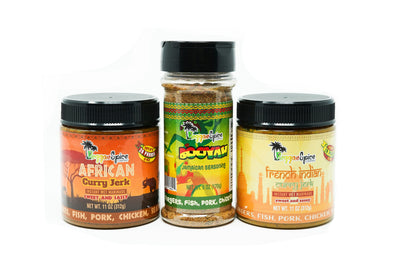Can You Marinate Foods While Cooking Sous Vide?
Sous Vide & Marinating
Sous vide works great with the traditional method of marinating foods, which includes draining and then cooking it. But, you may wonder if you can do the steps simultaneously. Marinades that only add flavor and aren’t meant to change the meat through brining or tenderizing work well. Sous vide while tenderizing marinades don’t work too well. Continue reading to find out more about sous vide and what problems occur with marinating while sous viding.
Method of Sous Vide
As discussed above, the method of sous viding involves cooking meat for a more extended period at very low temps. Sealing the food in sturdy plastic bags retains juices and aromas that you would otherwise lose in the process. The usual cooking times are between one to seven hours, even up to forty-eight hours or more in some cases. The temperature for sous vide is generally around 131 to 140℉ for meat, and higher for vegetables. The idea is cooking the food evenly, ensuring you properly cook the inside without overcooking the outside, and to retain moisture.
History of Sous Vide
The art of low-temperature cooking was first described in 1799 by Sir Benjamin Thompson, Count Rumford, an American-born British physicist, and inventor. He experimented by using air as the heat-transfer medium while attempting to roast meat in a machine which he had created to dry potatoes. In his own words, he remarked that “Not merely eatable, but perfectly done, and most singularly well-tasted.” When American and French engineers developed a preparation of food under pressure in the mid-1960s, (with or without heat), the researchers showed, just as Rumford, that the food showed particular flavor and texture improvements.
Essential Features of Sous Vide
Getting sous vide right used to be a chore, but nowadays, sous vide machines are available. The key to ensuring the meat is cooked thoroughly but still stays moist and tender, is placing the food in a warm bath, with the temperature at the desired final cooking temperature of the food. This prevents overcooking since the food can’t get any hotter than the bath it’s in. Using precise temperature control of the bath, also remembering that the bath temperature is the same as the target cooking temperature, allows you to precisely control the cooking. This means that even with irregularly-shaped and very thick meats can cook evenly, given enough time through sous vide.

Issues with Marinades During Sous Vide
When it comes to marinating meat while sous viding, there are several issues associated with using it while it’s in a tenderizing marinade. These issues include:
- Not needing tenderizing marinades since the sous vide process allows the meat to tenderize while in the bath for long periods - if there’s an issue, changing the cooking time should increase the tenderness to your desire.
- Timing: Most marinades are designed to work on raw meat, so once the food goes into the sous vide, it quickly increases the temperature and is fully cooked. So, if you use a marinade, it will be working on cooked meat for most of that time. Once you cook the meat, you change the protein, which is then affected by the marinade.
- No evaporation: Due to the sealed environment, there’s no evaporation, so alcohol-based marinades or ones with high acidity don’t reduce during cooking and can result in bad flavors.
- Safety: Food safety is a function of both temperature and time; a lower temperature usually considered insufficient to render food safe may be just fine if maintained long enough. However, pregnant women shouldn’t eat sous vide cooked food, since the temperatures may not be high enough for the time cooked. If not performed under carefully controlled conditions, it could expose themselves, as well as their fetus to risk.
Freezing Marinades Before Sous Viding
You can freeze ingredients in a marinade for an easy, quick meal in the future. All you need to do is add the meat and marinade to a glass bowl, ensuring you rub the marinade into the meat well. Then, transfer to a vacuum-sealed bag, removing as much air as possible. You can seal dry rubs normally, but if it’s a wet marinade, seal the bag without vacuum, or any liquids will be sucked out into the equipment. Once sealed, you can freeze the pouch one month to a year, depending on the size and type of meat.















